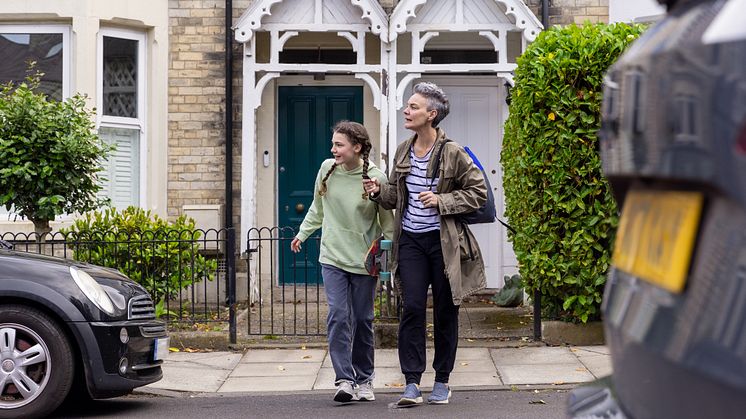
Press release -
Two years on, half of drivers still unsure if Highway Code changes have made roads any safer for pedestrians
Half (51%) of drivers still feel unsure whether changes to the Highway Code – made two years ago today – have made the roads safer for pedestrians, RAC research shows.*
One of the most notable changes advises drivers turning into or out of a junction to give way to pedestrians, cyclists and horse riders who are either crossing or are waiting to cross the road. This rule was part of a new hierarchy of road users designed to improve the safety of the most vulnerable.** Those who can cause the most harm, such as large goods and passenger vehicles, vans, minibuses, cars, taxis and motorcycles, now have the greatest responsibility to reduce the danger they pose to others.
Worryingly, in addition to the majority who feel unsure if the Highway Code changes have made any difference, only a fifth (18%) of drivers believe the new rules have increased pedestrian safety, while a third (31%) think pedestrians face even greater danger at junctions since the measures were published.
Research from the RAC’s Report on Motoring, published to coincide with the hierarchy’s second anniversary, suggests the reason for the confusion is the message simply hasn’t got through to drivers. While Highway Code Rule 170 states drivers should give way to pedestrians when turning in or out of junctions, less than a quarter (23%) of drivers say they always do. Nearly half (48%) say they give way most of the time but alarmingly, a fifth (19%) admit they don’t stop very often while 6% never do.
But interestingly, when the same pool of respondents were asked if, as pedestrians, they notice other drivers stopping to give way, just 2% said they see others stop all the time, while two-thirds (65%) said drivers rarely or never stop for them.
The findings correlate with a report from the Government’s Public Accounts Committee which, in November 2023, declared that messaging around the changes had not been communicated effectively enough to encourage public participation.
Drivers’ confidence in the 2022 rules also differ significantly between young and more experienced motorists. Over a third (37%) of drivers aged 17 to 24 believe the changes have made the roads safer for vulnerable users, whereas just 13% of those aged 65+ agree with them.
Similarly, only 13% of motorists with at least 25 years of driving experience believe pedestrians, cyclists and horse riders are safer now the rules are in place, compared to 37% of those with up to nine years of driving experience who feel more confident about the safety of vulnerable users. And across every UK region, at least two-in-10 pedestrians (21%) claim drivers never give way to them at junctions, with those in Wales (25%) and Yorkshire (24%) feeling least certain a car would stop to let them cross.
RAC road safety spokesperson Rod Dennis said:
“When initially introduced, we welcomed the major Highway Code changes because they were set to make the roads much safer for the most vulnerable users. However, two years on, it’s concerning to see there’s still so much uncertainty, with most drivers not stopping for people crossing when they should and therefore many pedestrians seeing no change to their safety at junctions.
“It’s interesting that when respondents described their experiences as pedestrians, a high proportion still don’t see enough other drivers doing the right thing and giving way to those on foot at junctions. Conversely, when reflecting on their own actions as drivers, their responses were different, and a higher proportion feel confident they always let pedestrians cross.
“The updates are only as good as a universal understanding of them. If a driver turns into a junction as a pedestrian is crossing, it’s already too late, because that’s when confusion could turn into a collision.
“Part of the reason may be that drivers simply don’t know that the changes have been made, least of all the consequences of ignoring them. Most drivers probably rarely refer to the Highway Code once they’ve passed their tests, and that’s where the problem could lie. We urge motorists to take another close look at the changes – either by visiting the Highway Code or RAC websites, or by picking up a printed copy. We’d also urge the Government to make another concerted effort in communicating the changes to all road users.”
Data from the Government’s latest road casualty statistics found that 30% of pedestrian fatalities occur at a junction, compared to 39% of serious injuries.***
Topics
Categories
* RAC research of 2,500 drivers for the Report on Motoring. Weighted to be nationally representative
** Highway Code, Rule H1, H2 and 170. In terms of drivers not giving way to pedestrians, the way law can be applied is explained in the introduction to the Highway Code: “Although failure to comply with the other rules of the Code will not, in itself, cause a person to be prosecuted, The Highway Code may be used in evidence in any court proceedings under the Traffic Acts to establish liability. This includes rules which use advisory wording such as ‘should/should not’ or ‘do/do not’.”
***Table 4: Percentage of pedestrian KSI casualties by severity and junction detail where the collision occurred, GB: 2018 to 2022
The press office email address is press.office@rac.co.uk and media centre is at media.rac.co.uk. Please note: the press office is unable to help with individual customer enquiries - please visit the RAC contacts page to find the right contact.
About the RAC
The RAC, an iconic UK brand, provides complete peace of mind to more than 13 million private and business drivers, whatever their motoring needs. As well as its premium nationwide breakdown assistance service – with an expert branded patrol workforce attending more than two million breakdowns every year – it offers a wide range of market-leading products across insurance, legal services, vehicle inspections and service, maintenance and repair. The RAC is also at the forefront in helping drivers make the switch to electric vehicles and leads in the development of new solutions for businesses and OEMs, partnering with the best in the motoring and mobility space.
Visit the RAC website.

